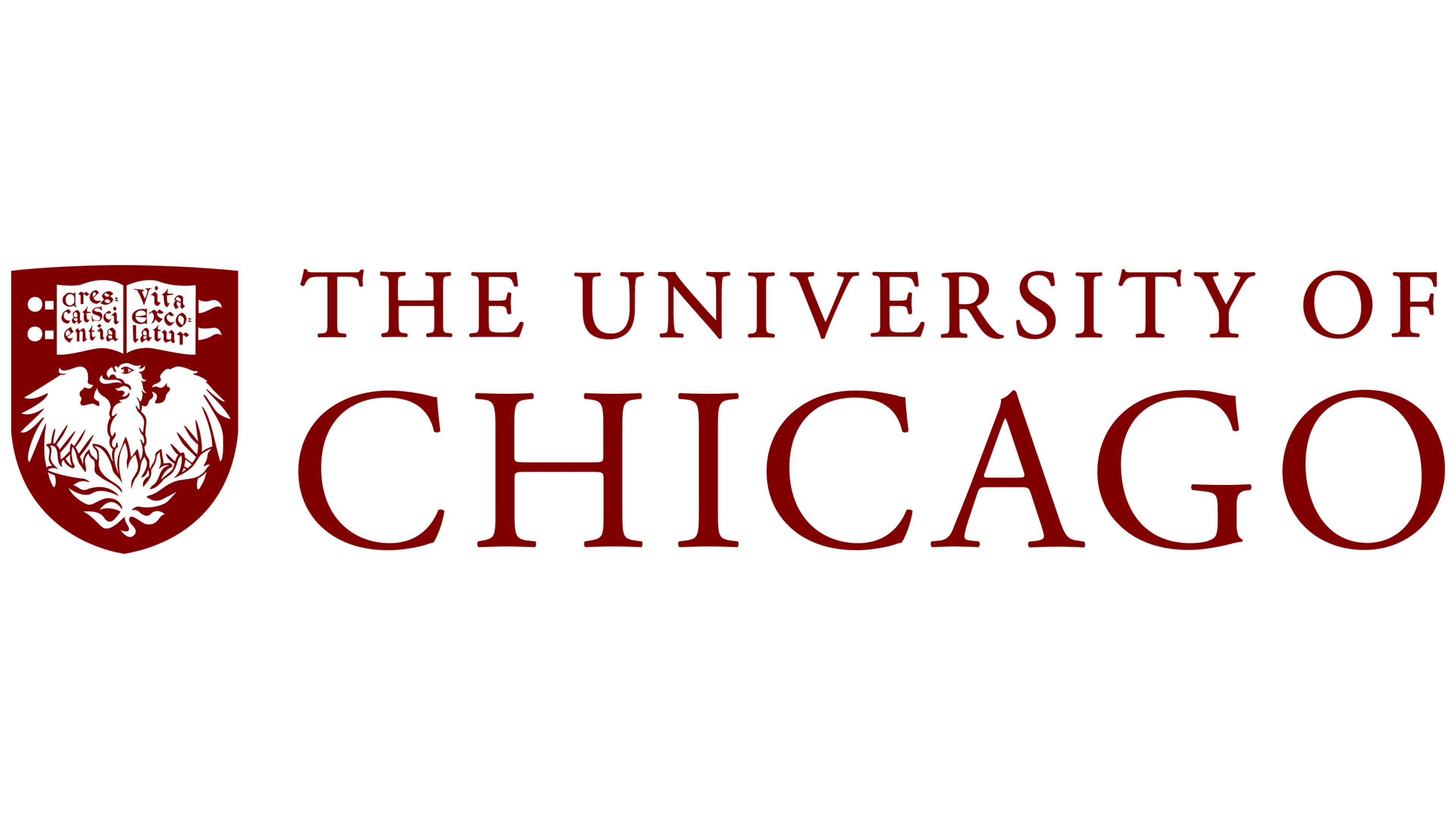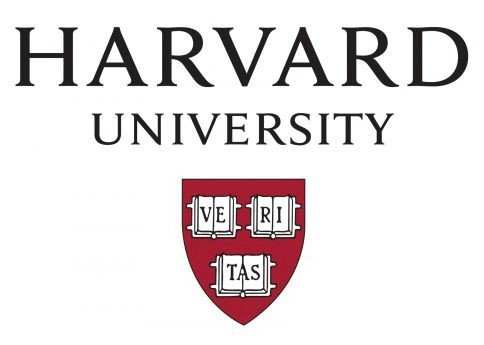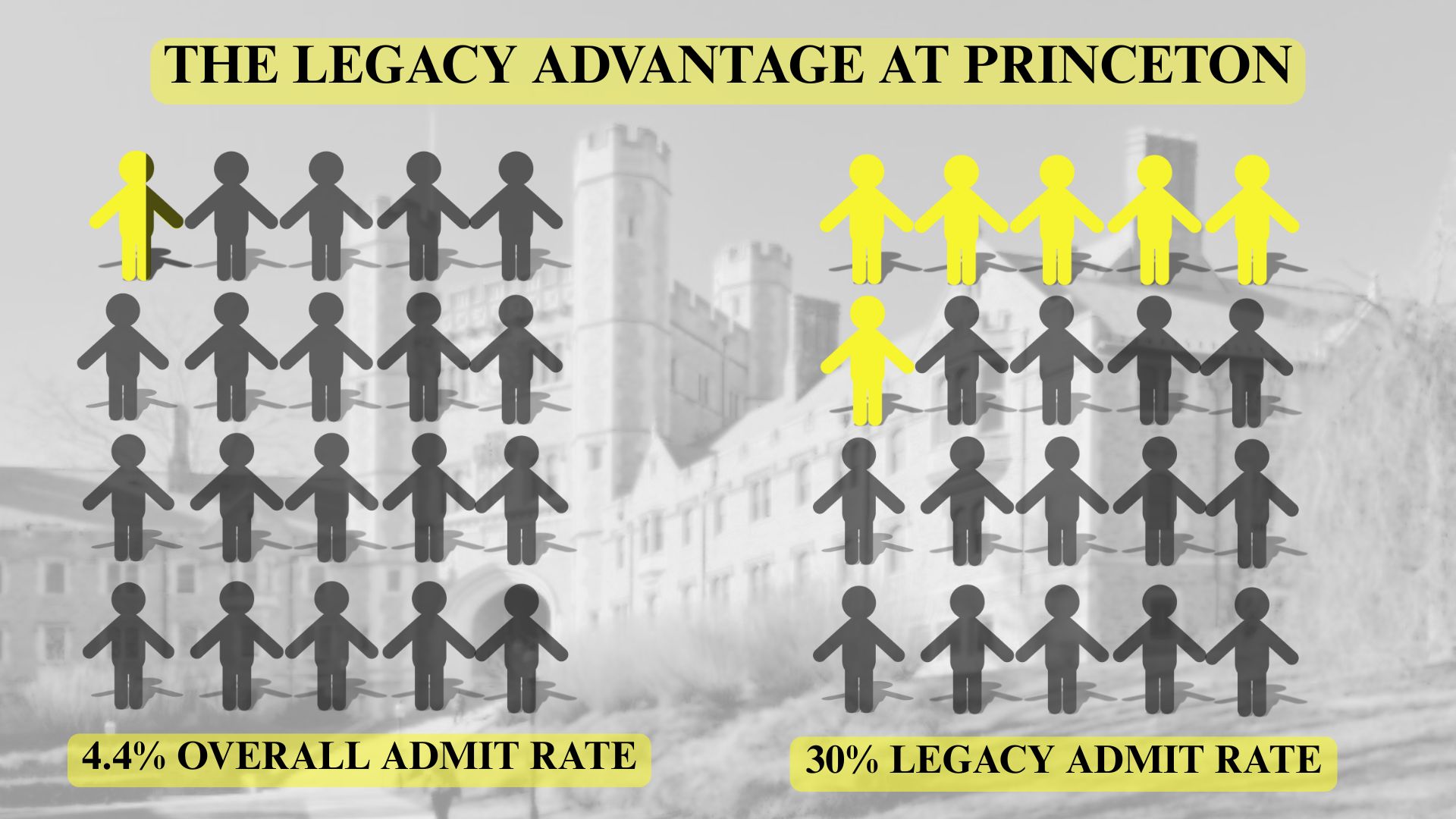Legacy, Affirmative Action, and the Changing Landscape of College Competition
“There’s this unspoken thing where if you have a connection, you’re already ahead. I know people who got into schools because their family had a history there, and it made me question how much of it is really about merit,” Charles Cook stated, a recent transfer to the University of California, Santa Cruz. As universities across the country face scrutiny over how they evaluate applicants, connected applicants have emerged as a symbol of privilege – and for some, frustration. I know that feeling well.
It was March 31, 2021, around 2 PM. I got an email from the University of Southern California Board of Admissions. The Board finalized my application decision. After 17 years of hard work to land at my dream school and follow in the footsteps of the 17 previous family members to attend USC, I decided to open the email. “We regret to inform you that…” “This year we had increasingly competitive applicants…” “Thank you for your recent application…” Yeah, we’ve all seen every version of these. I was rejected from my dream school, and my world was shattered. I closed my computer and moped for the rest of the day.


A few days later, my parents noticed that I didn’t read past the first line. USC had placed me into the Trojan Transfer Program. By maintaining a 3.5 GPA and spending a year at a community college or an abroad university tied to USC, I would have another opportunity to attend my dream school. After spending a year in the cigarette-stained streets of Paris, France, and learning some French here and there, I cried as the cardinal and gold confetti filled my admissions portal. To this day, it is still the most surreal feeling I’ve ever experienced.
Throughout my time in France, I met the rest of the students grouped into the Trojan Transfer Program, who decided to take their chances and attend the American University of Paris for the year. We quickly all realized that we were all tied to the university somehow. As I stated, I am a legacy student, as were most others offered this opportunity. Coincidentally, one girl I met was a family friend of Willow Bay, Dean of Annenberg School for Communication and Journalism at USC. Others I met, have their family names on a building somewhere on campus. I slowly connected the dots and questioned how much merit this program ensured.
MERIT-BASED ADMISSIONS
ARE DEAD
Photo Credit: The Vanderbilt Hustler
Sitting down to write my college admissions essay, my parents gave me personal anecdotes about their college application experiences. As hard as my parents pushed me, their motto was “Cs get degrees.” My mom showed me her transcript, and I saw a D in Calculus, a -C in Physics, etc. From what she could remember, the acceptance rate for USC was around 73%, helping me to understand where their mantra came from, seeing as the current acceptance rate is 10.4%. Clearly, the landscape of college admissions has undergone significant changes in recent years. Through removing testing scores or plummeting acceptance rates, the highly competitive nature of college has ruined the pure and hardworking nature higher education was founded on.
Seeing the flawed infrastructure, several universities and the Supreme Court have begun to tweak the system. Legacy admissions have been controversial since the start. “Originally, legacy preferences were designed to cap the number of Jewish students and, more generally, immigrant students at Ivy League institutions,” according to Richard Kahlenberg, Education & Housing Policy Expert. After years of deliberation and students questioning the merit behind the system, several universities have moved to eliminate legacy admissions in response to growing concerns over fairness and equity.
A Closer Look at America’s Finest
The following group of randomly selected, yet exceedingly prestigious universities – from Ivy League powerhouses to elite private and public universities – represent the apex of college admissions competitiveness. These institutions are often seen as symbols of academic prestige, but they can also serve as case studies in how privilege, legacy, policy, and selectivity interact.

Columbia University
- Admit Rate: ~3.9%
- Rank: #18 (2022)
- Legacy: Previously considered, now under scrutiny

Duke University

University of California, Los Angeles
- Admit Rate: ~9%
- Rank: #15 (2024)
- Legacy: Not considered in admissions (public)

University of Chicago
- Admit Rate: 6.2%
- Ranking: #6 (2024)
- Legacy: Considered in admissions

University of Michigan
- Admit Rate: 20%
- Ranking: #21 (2024)
- Legacy: Acknowledged but not factored into admissions decision

University of Southern California

Harvard University
- Admit Rate: 3.2%
- Rank: #3 (2024)
- Legacy: ~33% admit rate for legacies (pre-2023)

Stanford University

Princeton University
“IT’S AFFIRMATIVE ACTION FOR THE RICH”
– Richard Kahlenberg
Photo Credit: New York Times
In 2023, the Supreme Court ruled to end affirmative action, removing race as a factor in admissions decision-making. In a snowball effect, other universities began to reconsider aspects of their admissions process that may contribute to systemic inequities, legacy consideration being one of them. While some argue that banning legacy admissions levels the playing field, others believe it will have minimal impact on broader diversity efforts. Victoria Esquer, USC School of Cinematic Arts Assistant Director of Student Affairs, shed light on internal diversity initiatives during our conversation. “We have the George Lucas Diversity Scholarship, and that’s to promote diversity within the undergrad and the graduate student body. We’re looking at making sure we’re awarding that to students of diverse backgrounds,” Esquer stated. Other institutions are exploring new ways to maintain diversity, such as increasing outreach to low-income and first-generation students. These policy changes highlight an ongoing national debate about merit, privilege, and increasing inaccessibility in higher education.
The college admissions process in the United States is often framed as a meritocratic system, designed to reward academic excellence and extracurricular achievements. However, the reality is far more complex, as factors such as legacy status, financial privilege, and specialized transfer programs create disparities in access. College is no longer what it was designed to be.
The disparities in access based on legacy admissions are my most significant focus. “If you are a legacy applicant whose parents or grandparents give a lot of money, those applications are considered more desirable by the university,” Kahlenberg states. He adds, “It’s affirmative action for the rich. The students least in need of a boost in admissions are given yet another advantage. It takes fairness and turns it upside down.” As a legacy student, I wonder how much leverage I was given at USC compared to Stanford or any other university where the board gave my legacy status consideration. There’s no conspiracy behind legacy backdoors; it is a fact that these students are given the upper hand, but how much longer will this be acceptable for college admissions processes?
Legacy, Privilege, Policy: How We Got Here
Cook echoes this sentiment. “Sometimes I think, ‘Did I really earn this, or was I just good at playing the system?’ And then you see students with all the right credentials getting rejected because they don’t have the right last name or network. It makes you wonder.” He further explains how connections continue to shape opportunities beyond admissions. “Half of the professors and TAs (Teaching Assistants) are looking for who you know. So while they aren’t considering it in the admissions process, having family connections can impact your experience in so many ways,” Cook states.
James Murphy, Director of Career Pathways and Post-Secondary Policy at Education Reform Now, provides statistical evidence of this imbalance. “At Princeton, the overall admit rate is under 5%, but for legacies, it’s 30%. That’s kind of a big difference,” Murphy states. As an Ivy League university, the weight of legacy admissions significantly outweighs that of a qualified, unconnected applicant, showing the disparity in this flawed system.
Cook shares his student perspective. “What’s the goal of university education? –To produce the best-equipped individuals with the highest level of knowledge. If we’re admitting people under the legacy system, we lose the kids who are actually smarter than them.” On the opposite side of the spectrum, we have Bella Cowles, a USC Trojan Transfer Student on the Guaranteed Path. “Some argue that TTP and legacy admissions create advantages for students with USC ties. I think there are advantages and disadvantages. Advantages—yes, you get put into a different applicant pool. But that doesn’t mean you don’t have to meet the requirements once in that pool,” Cowles stated.

Although they may have an extra thumb on the scale, connected students still have to prove themselves through academics and extracurricular activities. The issue arises when students are shoved through a side door for the university’s prestige rather than their merit and accomplishments.
The Varsity Blues Scandal was among the largest admissions scandals at many top universities. Rick Singer, the mastermind behind the scheme, found a side door into top colleges, but it came at a hefty price. More than half of the 32 parents involved in the scheme paid bribes to grant admission to USC. Lori Loughlin was a unique case that portrayed her daughters as phony crew recruits to seek admission. Ultimately, it resulted in jail time and hundreds of hours of community service. Many ask, was it worth it?
Photo Credit: Joseph Prezioso
The clear divide between families with money and those without, highlights the systemic issues within this system. For many students, financial constraints limit their college choices. “The way FAFSA and federal aid work is that my family is in this weird threshold where I could get grants, but only for two years. That meant I had to go to a state school or a UC after community college to keep my costs covered,” Cook stated. USC’s tuition has recently risen to $99,139. Schools are not blind to the financial hardship of higher education, leading to scholarships or grant opportunities, but sometimes, that isn’t enough. Murphy points out, “It’s not the sticker price that’s so much the problem. It’s that even with scholarships, discounts, and grants, it’s very hard for a lot of people to just come up with $10,000 that they weren’t spending the previous year.” The admissions challenges are one part; the financial constraints are a whole other ball game that disproportionately impacts middle-class and low-income students, further limiting their options.
Cowles, who participated in the Trojan Transfer Program, also explains the networking privilege that plays a role in admissions pathways. Cowles’ mother, Kristin Borella, works within the School of Cinematic Arts, placing her on the Guaranteed Path to USC. This program route automatically enrolls students after they attend a university for a year while maintaining the required GPA. Unlike the traditional Trojan Transfer Program, these students don’t have to reapply and possibly face further rejection. “From my understanding, if you have a parent or family member on faculty or staff, your application gets put into a completely different pool of applicants,” Cowles stated.
USC’s Trojan Transfer Program (TTP) offers a unique path for students initially rejected directly from high school. These students can transfer to USC after a semester or a full year after attending an overseas university or a community college. While some view it as a valuable second chance, others question why certain students are placed in this program. Cowles acknowledges her privilege, stating, “I wasn’t sure if I got in because of my mom working here or because of my grades and extracurriculars.” However, she supports the program, stating, “If TTP wasn’t a thing, I don’t think I would be where I am today as a student, a person, or a professional.”
Esquer provided an institutional perspective on TPP: “The Trojan Transfer Program gives students a second opportunity – maybe they weren’t admitted the first time, but they’re given resources and tools to potentially gain admission later.” Although Esquer can’t speak on central admissions, she admits the admissions process is partial. “Every completed application is reviewed, but the challenge comes in how they are reviewed. Some divisions ensure that applications are reviewed multiple times, while others might have just one reviewer, which can lead to subjectivity,” Esquer explains. She continues to explain that for every 1,300 applicants to the film and TV production school at USC, only 54 are admitted. “I’ve seen students apply three, four, even five times before getting in. Sometimes, it depends on who is reviewing their application that year,” Esquer states.
Photo Credit: Maisy White
USC isn’t the only school that provides students these ‘side door’ opportunities. “Harvard has something similar to USC’s Trojan Transfer Program, called the Z-List, but it’s mostly for people who are ‘really hooked in’ – legacy isn’t enough, it’s legacy plus donors.” Joan Casey, Founder and President of Educational Advocates College Consulting, echoed this reality. “I’ve had clients whose parents or grandparents donated large sums of money and got in because of that. We’re not talking about a $1 million donation, we’re talking about much more,” Casey stated. These kinds of quiet, preferential tracks aren’t publicly promoted but shape who gets in and who never had a chance to begin with.
The Numbers Behind the Game
Legacy advantage
Opportunity Insights, Harvard (2023)
Special status at Harvard
NYT (2023)
Top 1% → Ivy League
Raj Chetty (2023)
Get “development” boost
ProPublica (2019)
USC TTP admits
Estimates suggest
USC at the center
DOJ (2019)
Public opinion
Pew Research (2022)
Legacy policy visibility
Education Reform Now (2021)
Reform is far from simple. After banning Affirmative Action, universities are exploring new policies, such as increased financial aid, to preserve campus diversity. These efforts are a small step and won’t immediately undo deep-rooted inequities in the system. Murphy explains that aside from the crumbling race-related injustices, schools opting to remove legacy preferences alone won’t change the injustice. “It just means they’re going to be enrolling other rich, highly privileged, heavily resourced students.” Regardless, he explains that removing these advantages is a step toward neutrality. “At least they’re enrolling them without giving them an extra thumb on the scale that nobody should get,” Murphy stated.
A combination of merit, privilege, and institutional priorities shape college admissions. Legacy admissions, donor contributions, financial barriers, and back doors create restrictive student opportunities to reach higher education. Especially today, when higher education barely cuts it for advancing into a respected career, these universities are making it increasingly more complex to succeed past high school. Addressing these inequalities requires greater transparency, policy reform, and a renewed commitment to merit-based admissions. Don’t get me wrong, I’m still proud to be a Trojan, but this project forced me to question what that pride is built on. Are these universities built to educate the most well-equipped students, build donor connections, or help the rich get richer?
“ELIMINATING LEGACY PREFERENCES ALONE WON’T FIX THE SYSTEM”
– James Murphy
Photo Credit: UCLA.edu